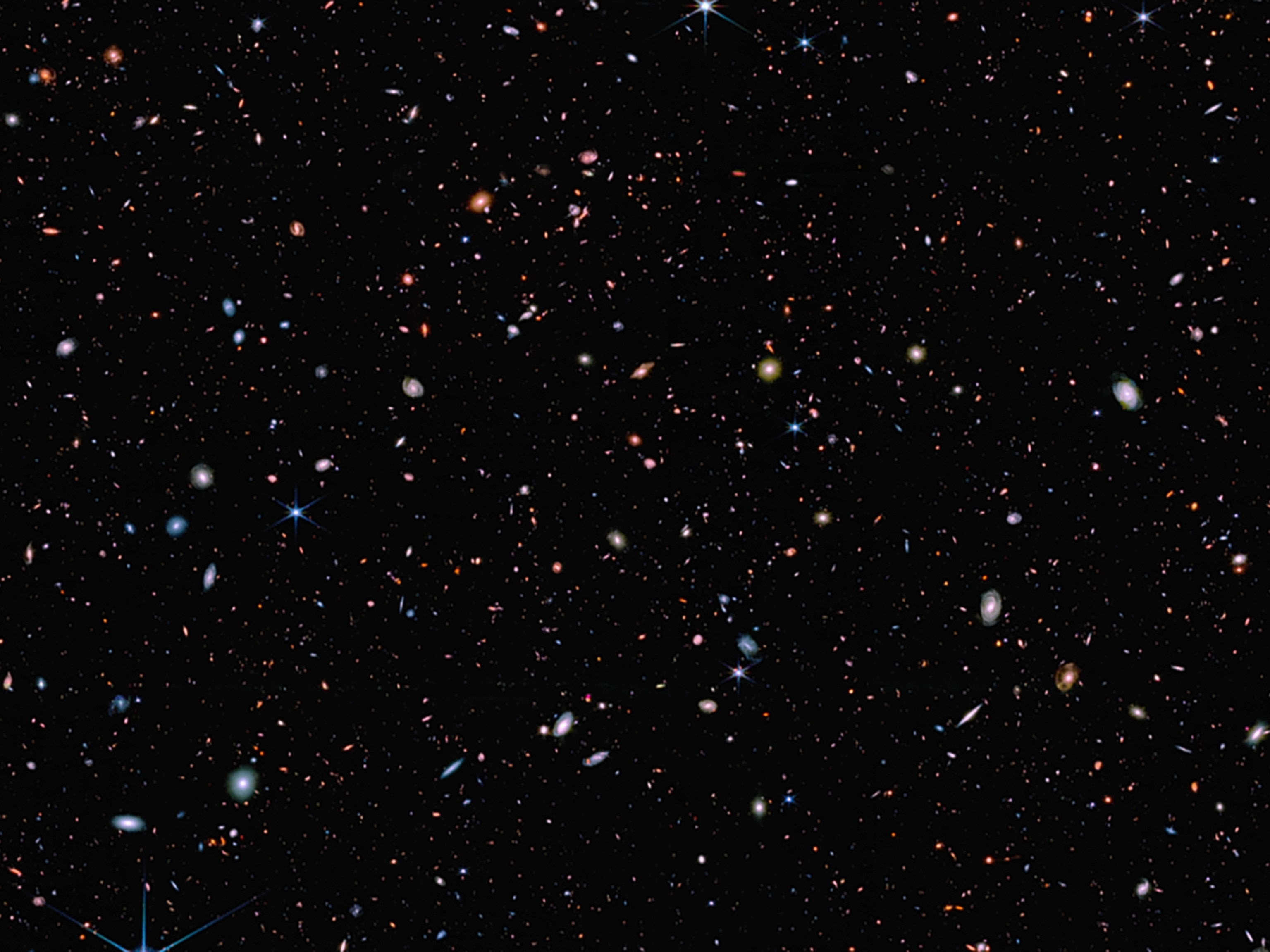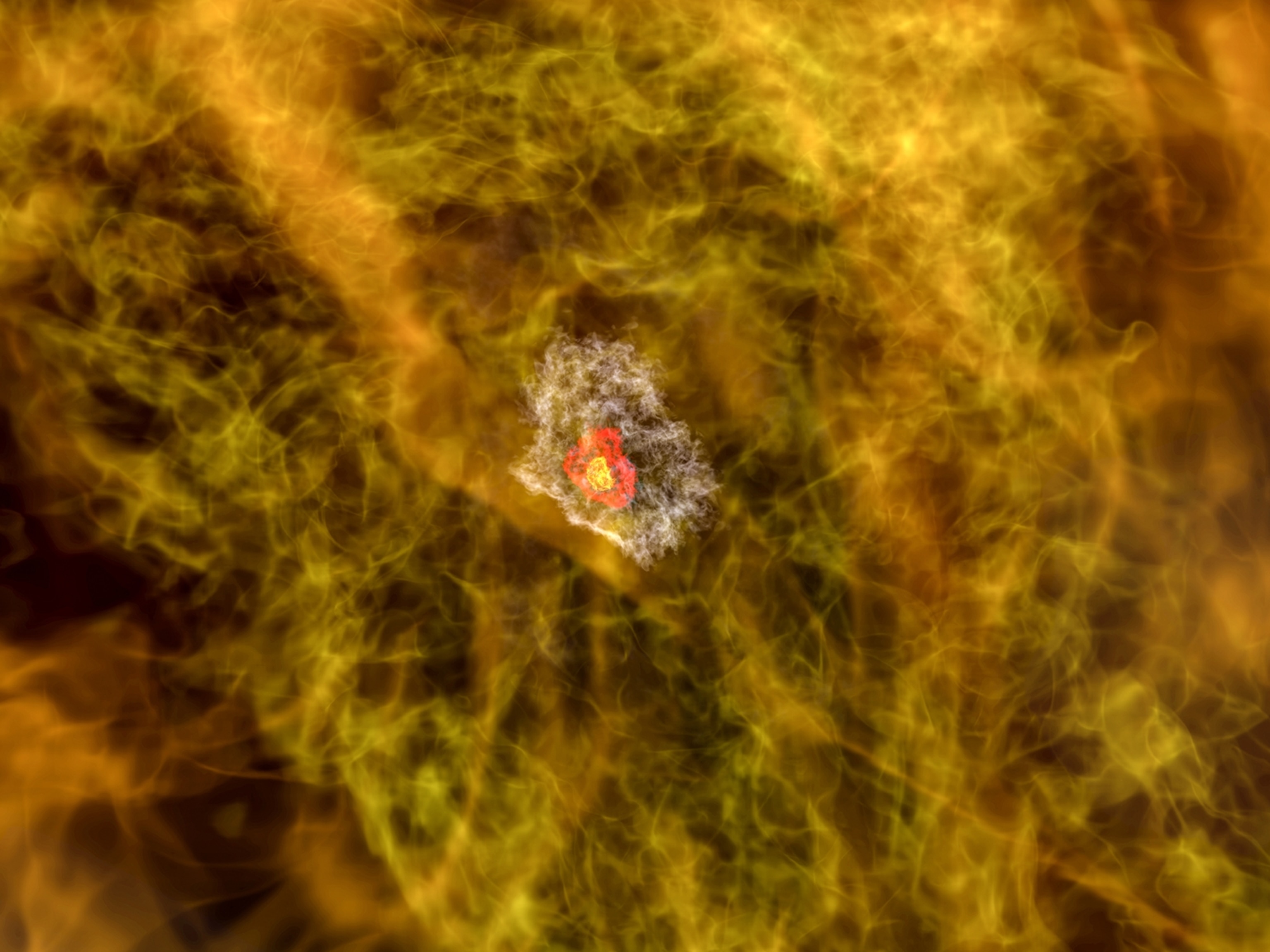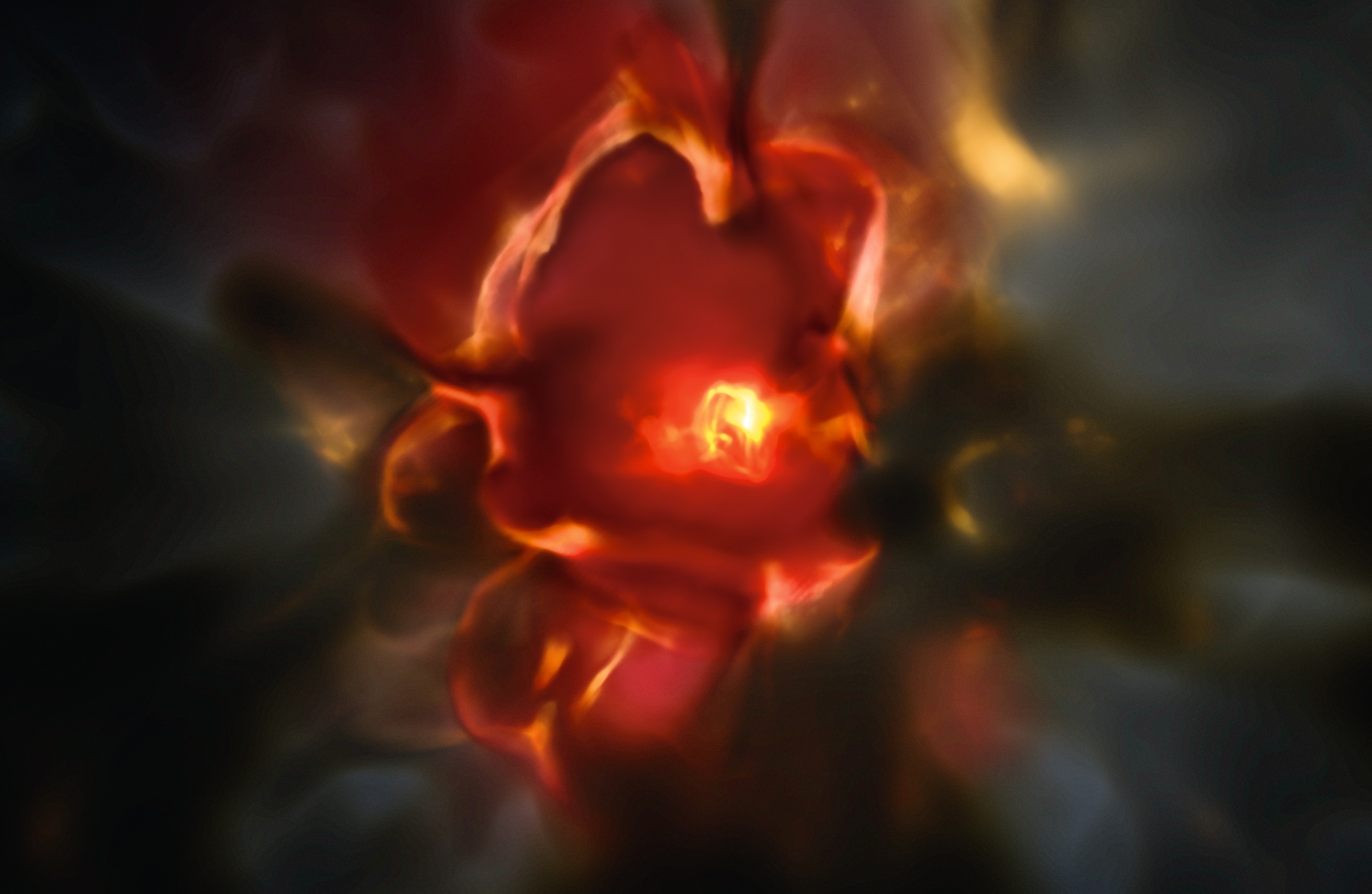
A First Glimpse of the Hidden Cosmos
What we can see is only a tiny fraction of what exists. To catch the first glimpse of the shadow universe around us, scientists are learning to detect the other stuff: dark matter and dark energy.
This story appears in the January 2015 issue of National Geographic magazine.
It used to be said that cosmologists, the scientists who study the universe as a whole, are “often in error but never in doubt.” Nowadays they’re less often in error, but their doubts have grown as big as all outdoors.
After decades of research involving new and better telescopes, light detectors, and computers, cosmologists can now state with some assurance that the universe was born 13 billion, 820 million years ago, most likely as a bubble of space smaller than an atom. For the first time they’ve mapped the cosmic background radiation—light released when the universe was only 378,000 years old—to an accuracy of better than a tenth of one percent.
But they have also concluded that all the stars and galaxies they see in the sky make up only 5 percent of the observable universe. The invisible majority consists of 27 percent dark matter and 68 percent dark energy. Both of them are mysteries. Dark matter is thought to be responsible for sculpting the glowing sheets and tendrils of galaxies that make up the large-scale structure of the universe—yet nobody knows what it is. Dark energy is even more mysterious; the term, coined to denote whatever is accelerating the rate at which the cosmos expands, has been called a “general label for what we do not know about the large-scale properties of our universe.”
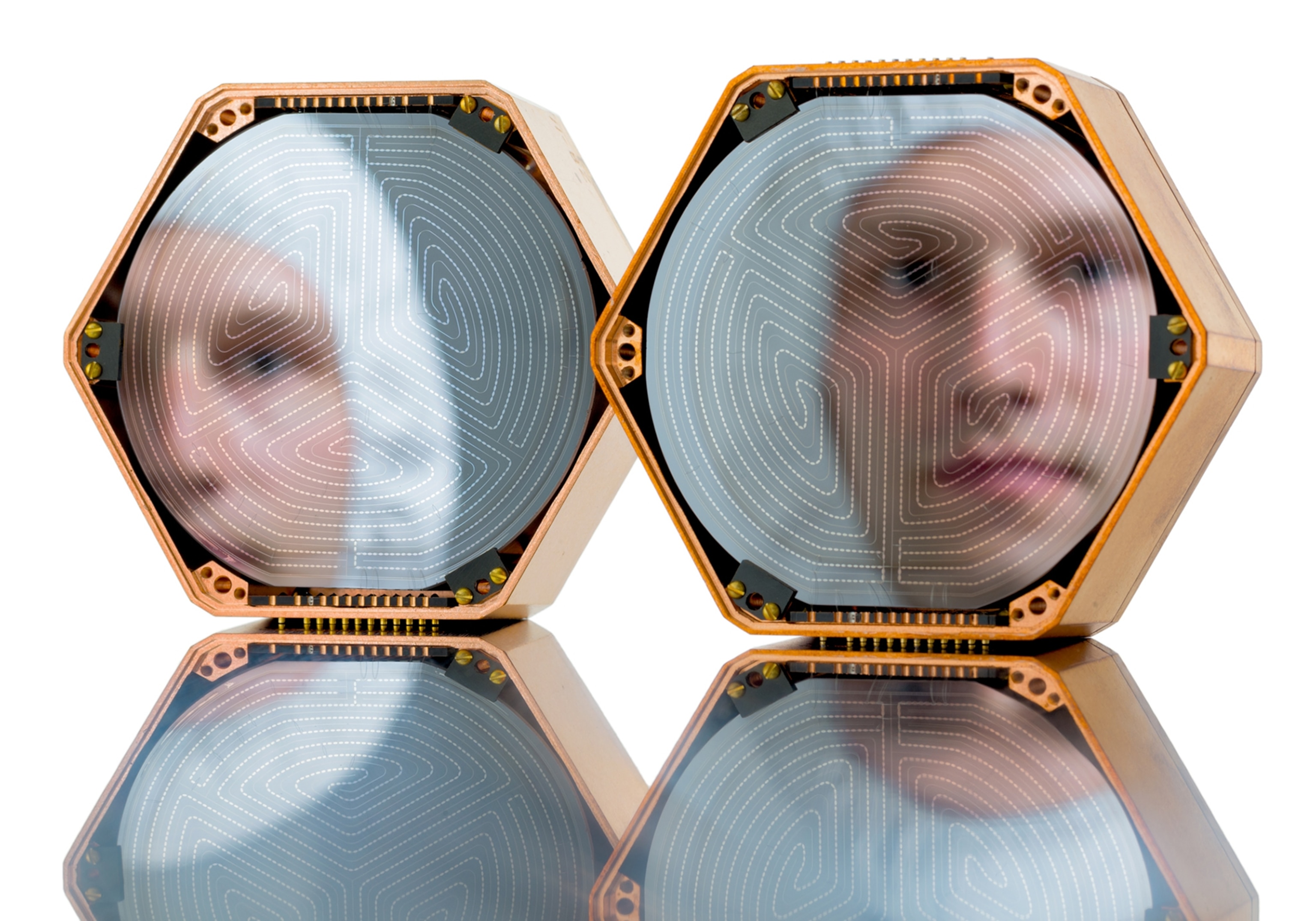
As a result, cosmologists today find themselves in something like the ignorance that afflicted Thomas Jefferson in 1804, when he enjoined Lewis and Clark to keep an eye out for woolly mammoths. Jefferson and his contemporaries knew that North America from the Mississippi River to the Pacific Ocean was big and important, but they had only vague notions of what might live there.
The first inkling of dark matter’s pervasive presence came in the 1930s from the Swiss astronomer Fritz Zwicky. While working at the Mount Wilson Observatory in southern California, Zwicky measured the speeds at which galaxies in the Coma cluster, 321 million light-years from Earth, orbit the center of the cluster. He calculated that unless the cluster contained much more mass than was visible, the galaxies would long since have flown off into space. That the Coma cluster had survived for billions of years could only mean, he surmised, “that dark matter is present in the universe in far greater density than visible matter.” Subsequent investigations have indicated that galaxies never would have formed in the first place had not the gravity generated by dark matter gathered primordial materials together when the universe was young.
Dark matter can’t just be inconspicuous normal matter, because there isn’t enough of that. Trillions of dim, normal matter objects surely are out there—among them black holes, dwarf stars, cold gas clouds, and rogue planets ejected from their birthplaces—but in no plausible scenario do they add up to five times the mass of the bright stuff. Hence scientists think that dark matter must be made of more exotic materials. Theorists working in what’s called supersymmetric quantum physics have conjured up lots of unobserved varieties of matter, one or more of which might turn out to be dark matter. But recent experimental results obtained with CERN’s Large Hadron Collider, near Geneva, Switzerland, ruled out some versions of supersymmetry. The mood among the theorists, says one of them, is “fairly somber.” Rather than speculate about the precise identity of dark matter, most scientists on the hunt just say they’re looking for WIMPs, or “weakly interacting massive particles.”

Evidence of just how weakly dark matter interacts not just with normal matter but also with itself has turned up three billion light-years from Earth, in the Bullet cluster—which is actually two galaxy clusters in the act of colliding. Astronomers mapping the Bullet with the aid of NASA’s Chandra X-ray Observatory found massive clumps of hot gas at its center, which they attributed to collisions of clouds of normal matter. But when the astronomers charted the Bullet’s gravitational field, they discovered two more huge concentrations of mass, one for each of the original clusters, farther from the center of the collision. They concluded that although the normal matter frames of the two clusters were colliding and merging as spectacularly as two munitions trains, their heavier cargoes of dark matter were sailing through the carnage uninvolved and unscathed.
Dark matter’s aloofness makes it challenging for experimenters to catch—even if, as some scientists estimate, dark matter particles are so commonplace that billions of them pass through every human being every second. The dark matter detectors currently operating are so technologically sophisticated as to resemble Fabergé eggs constructed for the delectation of future archaeologists.
One of them, the two-billion-dollar Alpha Magnetic Spectrometer, is perched on the International Space Station and hunts for evidence of dark matter particles colliding near the center of our galaxy. Most of the detectors, however, look for interactions between particles of dark matter and normal matter here on Earth. They’re buried deep underground, to minimize intrusions by high-velocity normal matter particles flying in from space. Some consist of a supercooled set of crystals or a tank of liquid xenon or argon surrounded by detectors and onionskin layers of shielding materials, ranging from polyethylene to copper to lead. (Recently mined lead tends to be mildly radioactive, so two experiments—one in Soudan, Minnesota, and the other in L’Aquila, Italy—use the melted-down ballast of ancient Roman shipwrecks. Mined thousands of years ago, the old lead emits less radioactivity.)
America’s Large Underground Xenon detector, the most sensitive of its kind, is situated in Lead, South Dakota, right off Main Street and 4,850 feet down by elevator. It started operating in 2013 but came up empty-handed; it’s currently resuming the search at a higher sensitivity. Other searches produced ghostly clues, but none has found definitive evidence of dark matter. The Large Hadron Collider, scheduled to resume operations in 2015 after a shutdown for maintenance and upgrades, may attain high enough energy levels to produce a few dark matter particles. But the odds are difficult to estimate, because the masses of the sought-after particles are not well understood. WIMP hunting is not for wimps.

Weird as the dark matter riddle may be, it looks almost pedestrian in comparison with the mysterious phenomenon of dark energy, which physicist Steven Weinberg calls the “central problem for physics” and astrophysicist Michael Turner nominates as the “most profound mystery in all of science.”
Turner coined the term “dark energy” after two teams of astronomers announced in 1998 that the rate at which the universe was expanding appeared to be accelerating. The astronomers reached this conclusion by studying a particular class of exploding stars that are bright enough to be seen far away and consistent enough in brightness to make them useful in charting the distances of remote galaxies. The mutual tug of gravity among all galaxies serves as a brake on the expansion of the universe, and so astronomers expected it to be slowing down. Instead they found just the opposite: The universe is expanding ever faster as time goes by and has been doing so for the past five to six billion years.
Observers today are busily mapping the universe with unprecedented precision, looking for evidence of just when dark energy emerged and whether it has since remained constant in strength or is growing even stronger. They have the advantage of being able to peer into the past: When researchers study a galaxy billions of light-years from Earth, they see it as it looked billions of years ago. They are limited, though, by the capacity of their telescopes and digital detectors. Now, as in the past, writing more accurate cosmological history requires building better gear.
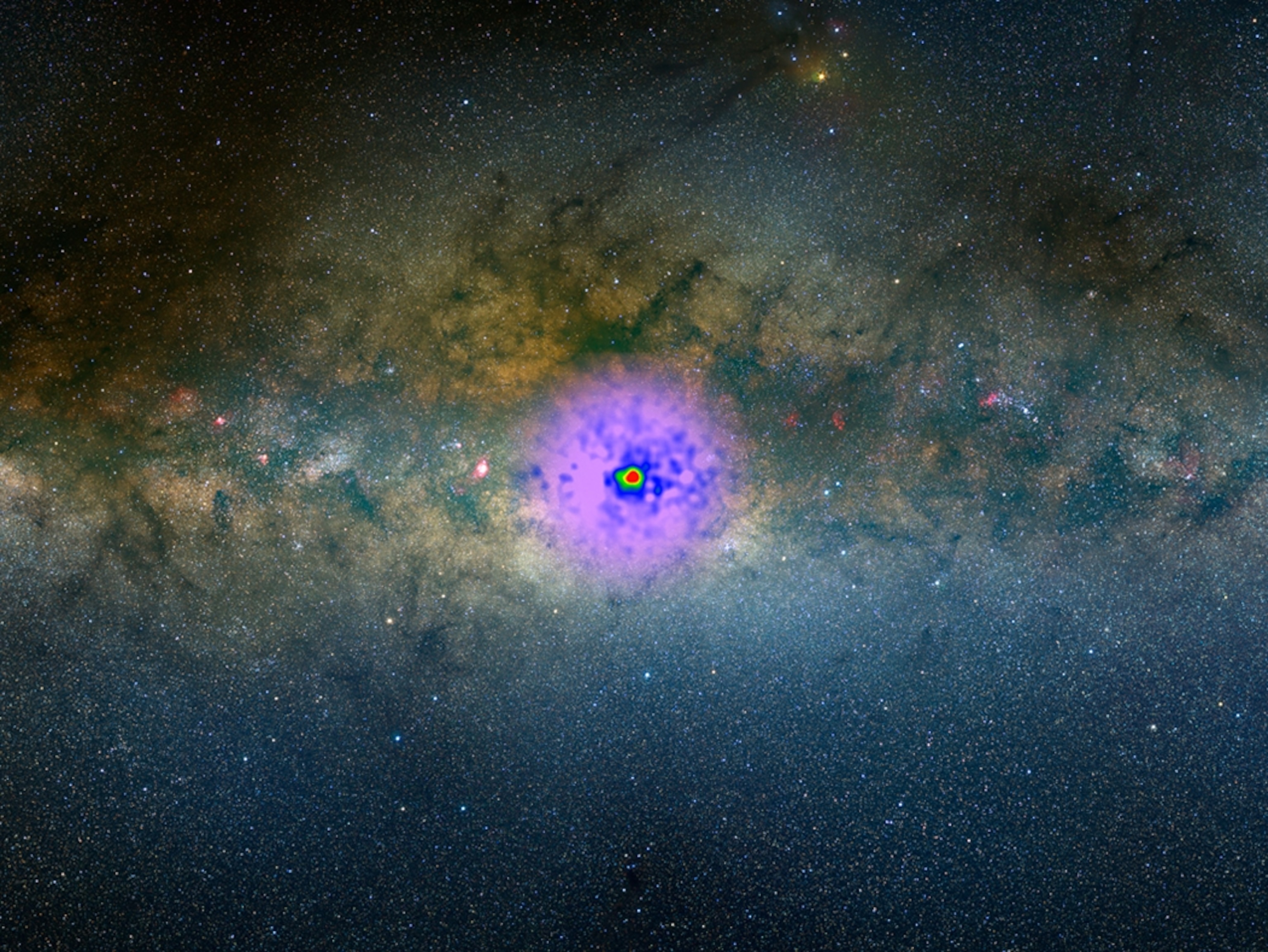
That call is being answered by projects such as the Baryon Oscillation Spectroscopic Survey, which employs a 2.5-meter telescope at Apache Point in New Mexico to map cosmic distances at an unprecedented one percent accuracy. Meanwhile the Dark Energy Survey, using the Blanco four-meter telescope in the Chilean Andes, is collecting data on 300 million galaxies. The European Space Agency’s Euclid space telescope, scheduled for launch in 2020, is designed to make precise measurements of cosmic dynamics over the past ten billion years. Expectations run high as well for the Large Synoptic Survey Telescope (LSST), currently under construction in north-central Chile, a few miles from the Blanco telescope. A squat, photographically “fast” 8.4-meter instrument equipped with the largest digital camera ever made, the LSST is designed to repeatedly image the depths of the observable universe, covering the southern night sky up to ten times each month.
With such tools, cosmologists hope to reconstruct the history of dark energy’s emergence and influence by directly measuring the cosmic expansion rate throughout the past. At issue may be nothing less than the future of the universe—and of its study. If we live in a “runaway universe” increasingly dominated by dark energy, most galaxies eventually will be driven beyond one another’s sight, leaving far-future cosmologists with little to observe but their immediate neighborhood and the blackness of space.
In the nearer future, making sense of dark energy may require radical improvements in the way we conceive of space itself. The voids between the planets and stars were long thought to be sheer nothingness, although Isaac Newton admitted that he couldn’t imagine how gravity could keep the Earth spinning around the sun if the space between them was utterly vacuous. In the 20th century, quantum field theory came to the rescue by demonstrating that space is never really empty but instead is suffused with quantum fields, which are literally everywhere. The protons, electrons, and other particles often described as the building blocks of matter are themselves excitations of quantum fields. Space looks empty when the fields languish near their minimum energy levels. But when the fields are excited, space comes alive with visible matter and energy. The mathematician Luciano Boi compares space to the water in a quiet Alpine pond: invisible when calm but evident when a breeze ripples its surface. “Empty space is not empty,” the American physicist John Archibald Wheeler once said. “It is the seat of the most rich and surprising physics.”
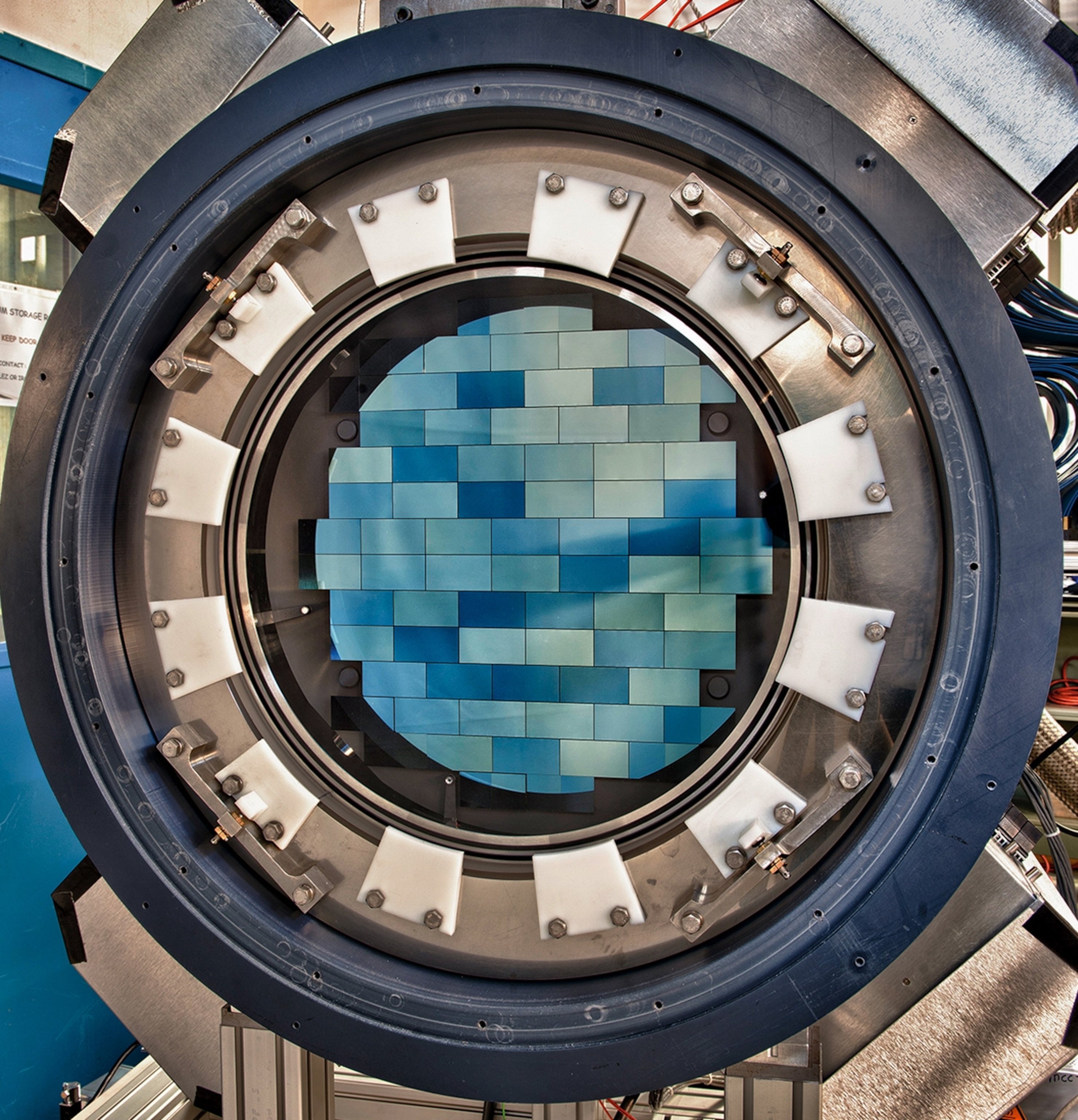
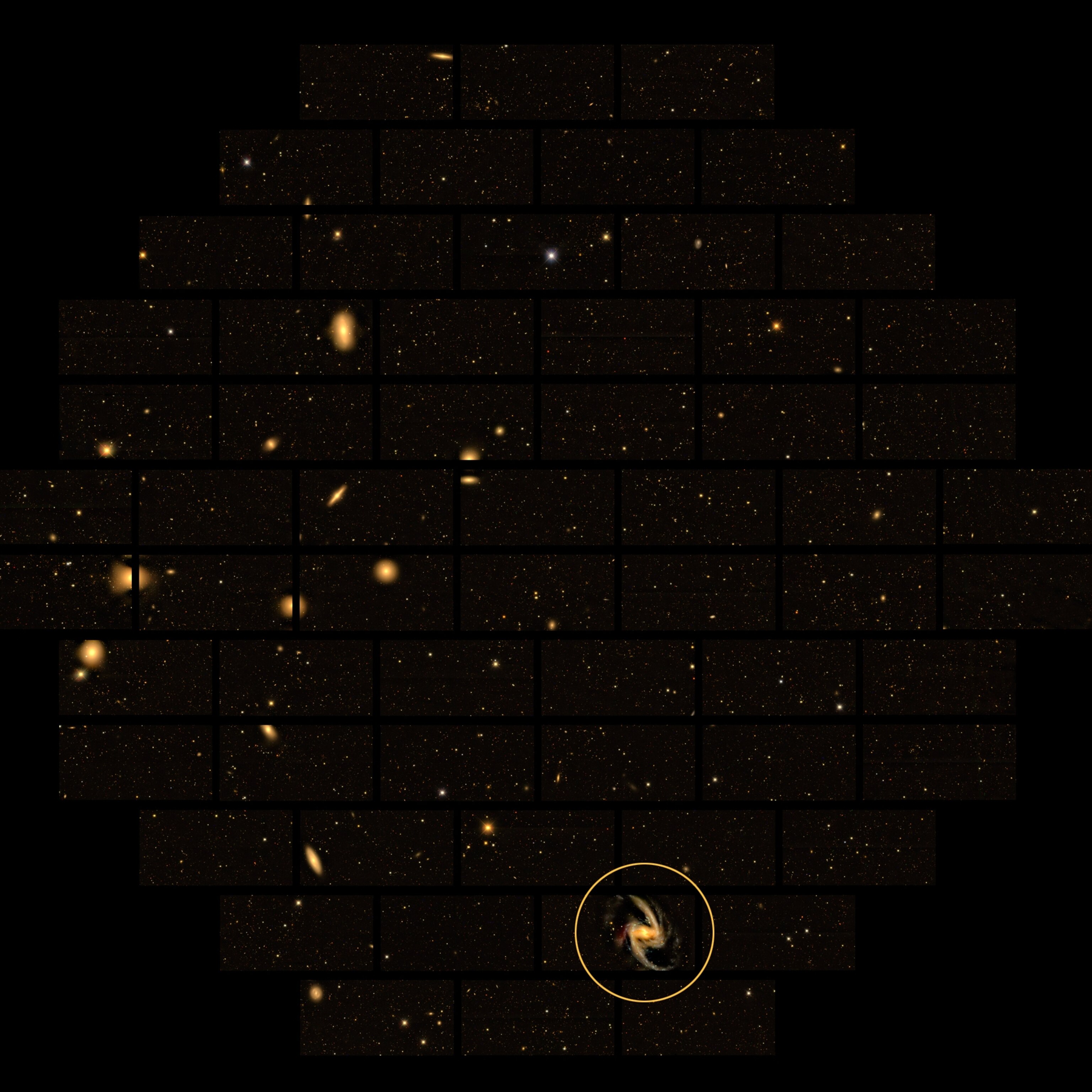
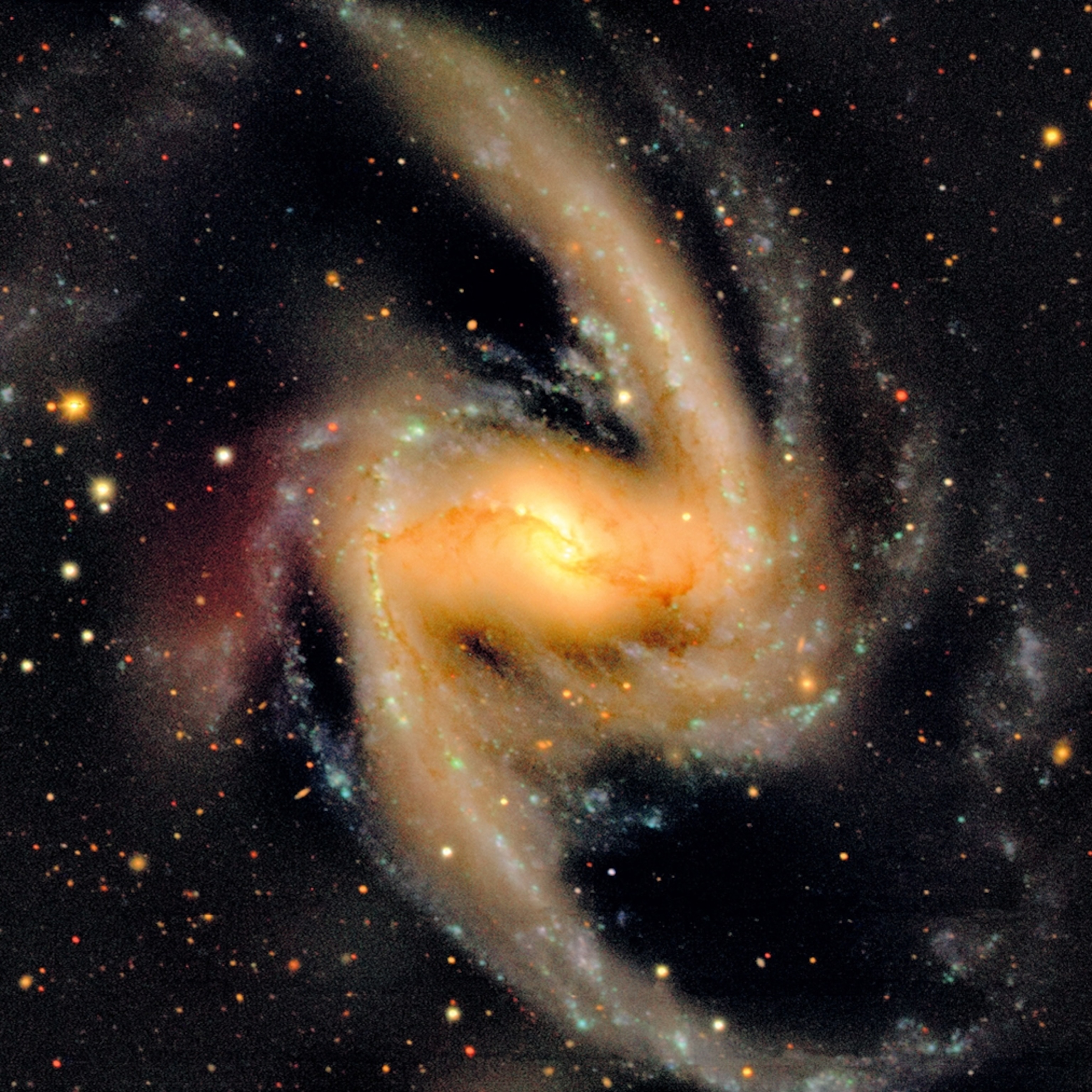
Dark energy may prove him to have been prophetic on the largest possible scale. To understand how cosmic space balloons—and why it now seems to be ballooning ever faster—physicists rely mainly on Einstein’s general theory of relativity, composed a century ago. That theory works well on the large scale but bows out at the microscopic level, where quantum theory reigns and the underlying cause of accelerating cosmic expansion is thought to reside. Explaining dark energy may require something new: a quantum theory of space and gravitation.
Scientists are confronted by the embarrassing fact that they don’t know just how much energy, dark or otherwise, space contains. When quantum theorists try to calculate how much energy resides in, say, a quart of seemingly empty space, they get a big number. But astronomers calculating the same quantity from their dark energy observations get a small number. The difference between the two numbers is staggering: It’s ten to the 121st power, a one followed by 121 zeroes, an amount far exceeding the number of stars in the observable universe or grains of sand on the planet. That’s the largest disparity between theory and observation in the entire history of science. Clearly something fundamentally important about space—and therefore about everything, since galaxies, stars, planets, and people are made mostly of space—remains to be learned.
Yet just such conundrums have opened the doors of discovery before. Einstein’s general relativity theory was invented in part to solve tiny discrepancies between the predicted and the observed orbits of the planet Mercury. Quantum physics sprang in part from little puzzlements about how heat is radiated. How much may be learned, then, by resolving today’s much deeper confusions about dark matter and dark energy? As the physicist Niels Bohr used to say, “No paradox, no progress.”





